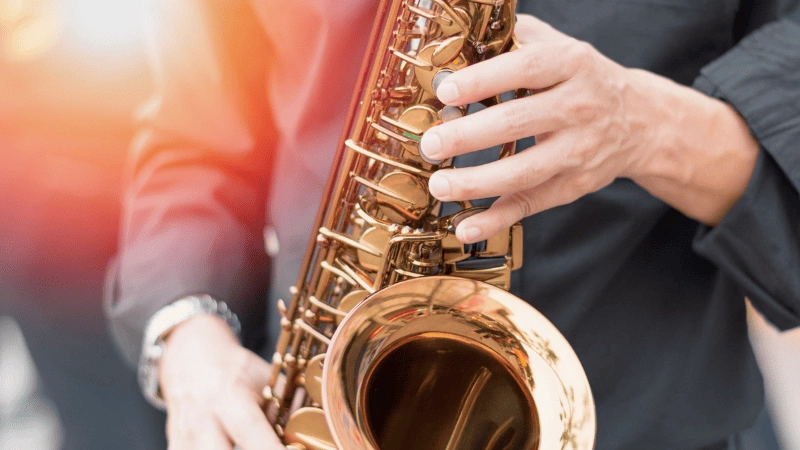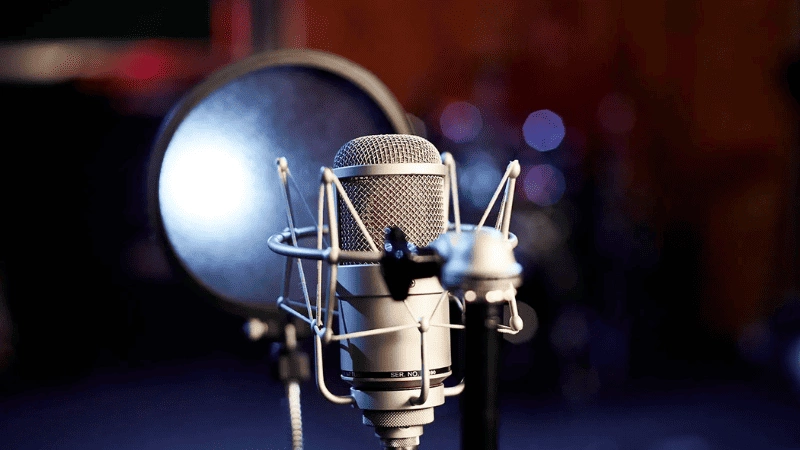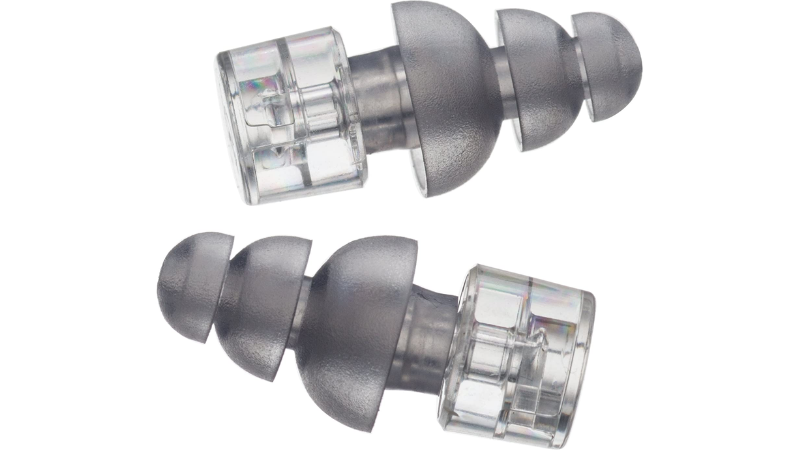Besides, the elastomer improves performance and sound quality. Although the use of silicone rubber in manufacturing musical instruments may seem unrelated, this article shows their relationship.
Going further, we will discuss the properties and applications of silicone rubber in musical instruments, how it improves performance and the prospective development of silicone rubber in instrument manufacturing.
What is Silicone Rubber?

Silicone rubber is an elastomer consisting of silicon, hydrogen, oxygen, and carbon. This synthetic polymer is used across several industries to manufacture various products. It also has exceptional properties that are exploited for making musical instruments.
Some of the properties of this elastomer include heat resistance, chemical resistance, flexibility, and electrical insulation. Furthermore, silicone rubber is non-toxic, has a non-slip surface, and is water resistant. The elastomer can also withstand harsh conditions, making it the perfect choice for musical instruments.
What Properties Make it Ideal for Musical Instruments?

Silicone rubber has several properties that make it suitable for manufacturing musical instruments. These properties include;
Heat Resistance
Silicone rubber has high heat resistance. This material can withstand temperatures from -75 to 200degreesC without losing its properties. Musical instruments need elastomers with exceptional heat resistance to ensure protection from damage and consistent performance.
Furthermore, because silicone rubber has a high heat resistance, it protects musical instruments, ensuring there are no sound quality alterations at high temperatures.
Electrical Insulation Properties
Silicone rubber is an electrical insulator, making it ideal for manufacturing electrical components. Musical instruments need electrical insulation to prevent interference and noise.
In addition, electrical insulation prevents electrical problems like voltage drops and short circuits, ensuring the instrument’s reliability. Silicone rubber also dampens vibration, reduces noise, and improves flexibility, making it useful for electrical guitar strings.
Elastic

Being an elastomer, silicone rubber possesses elastic properties. As a result, this material can be stretched without breaking or becoming brittle. Elasticity is a critical property for high-performance musical instruments.
For example, strings, wind, and percussion instruments need elasticity for better pitch and volume. Therefore, the elastic property of silicone rubber makes it ideal for these musical instruments.
Shock Absorbing Properties
Silicone rubber can deform and dissipate the absorbed energy as heat. This shock-absorbing property of the elastomer makes it ideal for electronic devices and musical instruments. Furthermore, as an excellent shock absorber, silicone reduces noise and improves the overall performance of a device.
Non-slip
Musical instruments like the cello need an anti-slip surface to keep them in place. Otherwise, they will move out of place and may injure the musician. In addition, slipping can affect playability and performance. Fortunately, silicone rubber has an anti-slip surface, keeping instruments in place.

Silicone rubber’s non-slip property is a result of its molecular structure. The molecular structure of silicone consists of long-chain silicon and oxygen atoms linked together by hydrogen and carbon atoms. Consequently, the material’s surface has tiny protrusions that interlock any material that stays on it, creating a strong bond.
Cost-effectiveness
The use of cost-effective materials in the production of musical instruments can make these products more accessible to a wider range of people. Using sustainable materials not only reduces the cost of ownership over time but also helps to reduce our reliance on finite natural resources.
Silicone rubber is a durable and resilient material that is cost-effective, and it does not compromise the quality of the finished product. Therefore, it is an excellent choice for the production of musical instruments, as it can provide a long-lasting and reliable product at a reasonable price point.
Why is Silicone Rubber Important for Musical Instruments?

As mentioned earlier, silicone rubber possesses exceptional properties. These properties translate to the musical instrument produced using silicone rubber. Reasons, why silicone rubber is important in musical instruments, include:
Durability
Silicone rubber has excellent abrasion-resistance properties. It is also resistant to harsh conditions and wear and tear, even with frequent use. Manufacturing a musical instrument with silicone rubber ensures the material lasts as long as possible without losing its efficiency.
Non-toxicity
Silicone rubber is an inert material and does not contain harsh chemicals, making it non-toxic. This property is especially great for musical instruments that come in contact with the mouth. In addition, due to their non-toxicity, these musical instruments are hypoallergenic and do not cause allergic reactions to a musician’s skin.
Flexibility
Musical instruments hardly have regular shapes. Fortunately, because of its flexibility, silicone can be molded into precise, complex shapes for a high-quality musical instrument.
Moisture Resistance
Another property of silicone rubber is its water resistance. Musical instruments are often exposed to fluids like sweat and saliva when playing. Fluids can damage the instrument and cause corrosion. But with a silicone rubber material, the instrument is protected, prolonging its lifespan.
Other Materials Commonly Used in Musical Instruments

String
String instruments vibrate, and they need tuning for a perfect pitch. Musical instruments like zithers, violins, and cellos have strings for rich sound. Stringed musical instruments are often made from materials including nylon, steel, and synthetic materials.
A stringed musical instrument’s sound quality and durability depend on the string material. For instance, classical guitars have strings made out of nylon while acoustic guitar strings are made out of steel.
Metal
Metal is used in making musical instruments like trumpets, cymbals, and saxophones. Bronze, copper, and brass are popular metals for manufacturing musical instruments due to their high conductivity. That means they transmit sound vibrations efficiently. Furthermore, metal is durable and improves an instrument’s visual appeal.
The downsides to metal musical instruments include corrosion, weight, and temperature sensitivity. Instruments made from this material may be heavy to hold and tiring to play for long periods. In addition, metal instruments are prone to corrosion over time, affecting their playability and appearance.
Because metal instruments are temperature sensitive, they may not produce a consistent sound at varying frequencies. This type of instrument is also prone to unwanted noise and overtones.

Bamboo
Due to its natural resonance, bamboo produces a warm and mellow sound. This material is used for manufacturing flutes and panpipes. Moreover, bamboo is lightweight, durable, and versatile. Furthermore, because bamboo is a natural material, it is sustainable. The material is renewable, and it does not harm the environment.
Although bamboo is sustainable, it is prone to cracks, especially in a dry environment. Furthermore, compared to other materials, bamboo is not as durable and may not project sound as well as they do.
Wood
Wood is another popular material for manufacturing wind instruments like flutes and clarinets. It is also used for the frame of stringed instruments like violins and guitars. However, because there are different wood species, the characteristics of wood musical instruments vary.
The downside of wood as a musical instrument is that it is sensitive to temperature and humidity changes, affecting its durability and playability. Furthermore, wood musical instruments can be challenging to carry around because of their weight.
Plastic
Plastic is an inexpensive and popular material for producing musical instruments. They are easy to maintain and can withstand rough handling. Ít is also lightweight and affordable compared to metal and wood instruments. Popular plastic musical instruments include ukuleles, recorders, and toy drums.
Nevertheless, plastic has its downsides as well. The downsides of plastic as a musical instrument material include its poor sound quality. It can also get slippery, making playing less tactile and uncomfortable.
Applications of Silicone Rubber used in Musical Instruments

Non-Slip Mat for String Instruments
Although non-slip mats seem like a simple accessory, they effectively prevent slips and improve stability. Silicone rubber non-slip mat cushion string instruments, absorbing impact and reducing scratches. Furthermore, because they provide stability, non-slip mats can help improve a musician’s accuracy while lowering the risk of damage.
Cello and guitar players especially benefit from using non-slip mats. This accessory steadies the musical instrument, helping players fine-tune and produce the best sounds.
Drum Pad
Drum pads simulate a drum’s sound. Usually, these devices can be electronic or acoustic. Drum pads are made from silicone rubber and have sensors to detect when they are struck with a drumstick. Acoustic drum pads dampen noise when placed on a drum head, making them suitable for practice sessions in a recording studio or residential area.
Electronic drum pads, on the other hand, simulate sound. Depending on the configuration, these drum pads can produce sounds of different instruments, including bass and cymbal. They are usually connected to a drum module to produce drum sounds.
Hand Roll Piano
Hand roll pianos are rollable. This musical instrument is a convenient and affordable way of playing the piano. Handroll pianos are great for beginners and travelers. They do not take up space and they are rollable without posing any damage to the keys.
Because of its flexibility and elasticity, silicone rubber is used to manufacture rollable pianos. The musical instrument has sensors that detect when a key is pressed and they make a corresponding sound. Furthermore, the instrument has an in-built speaker, giving musicians a convenient and on-the-go experience.

Synthesizers
A synthesizer, or “synth”, is an electronic instrument for generating sounds. This instrument can produce a wide range of sounds, live or pre-recorded. Silicone rubber is often used to manufacture buttons and keypads on synthesizers. This elastomer protects the delicate electronic components in the equipment, ensuring its durability and functionality.
High-fidelity Earplugs
Although high-fidelity earplugs are not musical instruments, they are also useful in the music industry. These earplugs are made out of silicone and custom molded to fit the ear canal. They are also available in several sizes and shapes to suit everyone.
High-fidelity earplugs protect the ears by reducing the volume of sound entering the ears while maintaining clarity and sound quality. Consequently, anyone using this device can listen to music and speech clearly at all frequencies at safe sound levels.
Musicians and concertgoers often use high-fidelity earplugs to enjoy music and hearing protection. This device is also ideal for use in noisy environments.
Microphones

Silicone rubber is also used to manufacture microphone accessories. These accessories include seals that prevent unwanted sound from entering the microphone. In addition, silicone rubber provides vibration damping in microphones, reducing feedback and improving sound quality.
Furthermore, microphone windscreens or pop filters are also made from silicone rubber. This accessory reduces distortion when using the microphone to record audio.
Recording Equipment
The recording process can be limited by factors such as noise, interference, and distortion. However, silicone rubber has the ability to absorb vibrations and reduce noise, making it a valuable material for audio equipment. Its sound-dampening capability is already utilized in the manufacturing of mixers and headphones.
In addition, the use of silicone accessories in an audio interface can improve the processing of audio signals, ensuring greater signal clarity and high-quality recordings. Therefore, the benefits of silicone rubber in enhancing audio hardware cannot be overstated.
Enhancing Sound Quality with Silicone Rubber

How Can Silicone Rubber Boost the Sound Quality of Musical Instruments?
Although musical instruments produce pleasant sounds, especially when played by professional musicians, these instruments can create vibrations. These vibrations interfere with sound quality, creating noise. Fortunately, reducing vibrations to the barest minimum can improve sound quality.
Silicone rubber has vibration-damping properties, reducing noise through sound resorption. For instance, silicone non-slip mats hold musical instruments in place, preventing them from slipping while being played. Consequently, because the instrument is in place, it produces the intended sound, contributing to overall sound quality.
Another way silicone rubber boosts sound quality is by providing soundproofing. In addition, some specialized silicone rubber can reduce external noise and echoes, creating a more controlled environment for musical performance.
Sound Quality Before Vs. After Using Silicone Rubber
The effect of silicone rubber varies depending on the musical instrument and application. Nevertheless, silicone rubber provides similar effects for instruments. The table below is a comparison of the impact of silicone rubber on sound quality;
Improving Instrument Performance with Silicone Rubber

Silicone rubber can improve instrument performance in several ways, including:
Vibration Damping
Silicone rubber dampens vibrations produced in a musical instrument, improving its sound and performance. In addition, the elastomer is great for noise reduction. It prevents unwanted buzzing and humming for a more focused sound.
Enhanced Grip
Silicone non-slip mats provide a surface that stabilizes instruments like cellos and guitars. Due to the improved grip, a musician can play without the instrument slipping. Consequently, the sound produced during live performances is accurate and precise.
Sound Absorption
Silicone rubber absorbs sound and echoes in the surrounding room, preventing interference with the musical instrument. Because the elastomer absorbs sound, the instrument can produce a clear and more accurate sound. This property of silicone is especially ideal for noisy environments and music-making studios.
Durability
If a musical instrument is not in good shape, it will have poor performance and sound quality. Musical instruments are prone to wear and tear and have poor resistance to high heat and moisture. Fortunately, silicone rubber can protect musical instruments, improving their durability and performance.
Flat Frequency Response
Flat frequency response is a musical instrument’s ability to produce audio signals with a consistent and uniform sound across all frequency changes. Audio engineers seek to achieve a flat frequency response when recording sounds.
Fortunately, silicone rubber absorbs unwanted vibrations, reducing resonance and improving sound reproduction in a musical instrument. In addition, due to its elasticity, silicone rubber provides a cushioning effect, improving the instrument’s sound quality.
The Effects of Silicone Rubber on the Playability of Musical Instruments

The playability of a musical instrument is how easy to play. Musical instruments with good playability are comfortable, allowing a musician to play without stress. The playability of musical instruments varies. For instance, string instruments’ playability is different from wind instruments.
Regardless of the type of musical instrument, silicone can improve its playability. Silicone rubber enhances the balance and responsiveness of an instrument to make it more playable. For instance, non-slip mats improve grip, allowing musicians to play seamlessly. In addition, the elastomer dampens vibrations and eliminates noise, helping a musician play without distractions.
How to Care for Silicone Rubber Musical Instruments

Although silicone rubber protects musical instruments and improves their durability, caring for them is still essential. You can care for silicone rubber musical instruments by:
- Storing instruments individually. Stacking instruments or placing heavy objects on them can cause damage
- Clean the instrument with a damp cloth to remove dirt. Avoid soaking the equipment in water or using harsh and abrasive chemicals
- Store the instruments in a protective case during transportation. A protective case prevents scratches and damage to the instrument
- Although silicone rubber can withstand high temperatures, it is essential to avoid keeping musical instruments in extremely high temperatures. Doing this prevents the deterioration of the musical instrument
Prospect Developments in Silicone Rubber Technology for Musical Instruments

Although silicone rubber already has exceptional properties, the technology can be improved to produce better musical instruments. Innovative solutions using silicone rubber can revolutionize the music industry. Some of the prospective developments of silicone rubber to look forward to including:
Improved heat resistance: although silicone rubber already has a great temperature resistance range, it can still be improved. With improved heat resistance, silicone rubber instruments can withstand more extreme temperatures and even perform seamlessly under such conditions.
Innovative solutions: currently, silicone rubber is used for manufacturing non-slip mats and drum pads. With improving technology, the elastomer should be employed in manufacturing musical instruments. This may lead to the production of new and innovative designs that maximize silicone rubber’s unique properties.
Improved applications: because technology is not static, the current applications of silicone rubber in the music industry are expected to improve. For instance, the shock-absorbing properties can be enhanced to manufacture high-performance synthesizers and keyboards.
In addition, the material can be molded into even more intricate parts to improve a musical instrument’s overall playability and performance.
What are the Limitations and Challenges of Silicone Rubber in the Music Industry?

With its rapid development, the future of silicone rubber in the music industry is promising. Nevertheless, this material still has limitations as a solution for music applications.
One of the challenges of silicone rubber technology in the music industry is its aesthetics. Compared to metal instruments, silicone is not as visually appealing, which may affect its marketability. In addition, processing silicone into finished products may result in long lead times and, consequently, higher production costs.
Another limitation of silicone rubber technology is its cost. The raw material and its extraction can be expensive compared to traditional musical instruments like bamboo and wood.
However, with continued research and development, the limitations of silicone rubber technology can be addressed and improved.
Conclusion
Silicone rubber’s exceptional properties make it ideal for producing musical instruments. This elastomer’s unique properties improve musical instruments’ durability, performance, and sound quality. From non-slip mats to drum pads, silicone rubber protects the musical instrument and the musician.
Nevertheless, this is just the beginning. With technological advancement, more silicone rubber musical instruments should emerge in the near future. As a rubber products manufacturer, creating innovative silicone rubber solutions for the musical industry can establish your business.
Customize your Rubber Products!
Musical instruments hardly have regular shapes. Therefore, the silicone parts necessary for manufacturing them require expertise. Fortunately, Hongju Silicone is an expert manufacturer in creating custom silicone products.
We have several capabilities that enable us to manufacture your products according to specification in a short time. You can reach out for an instant quote.